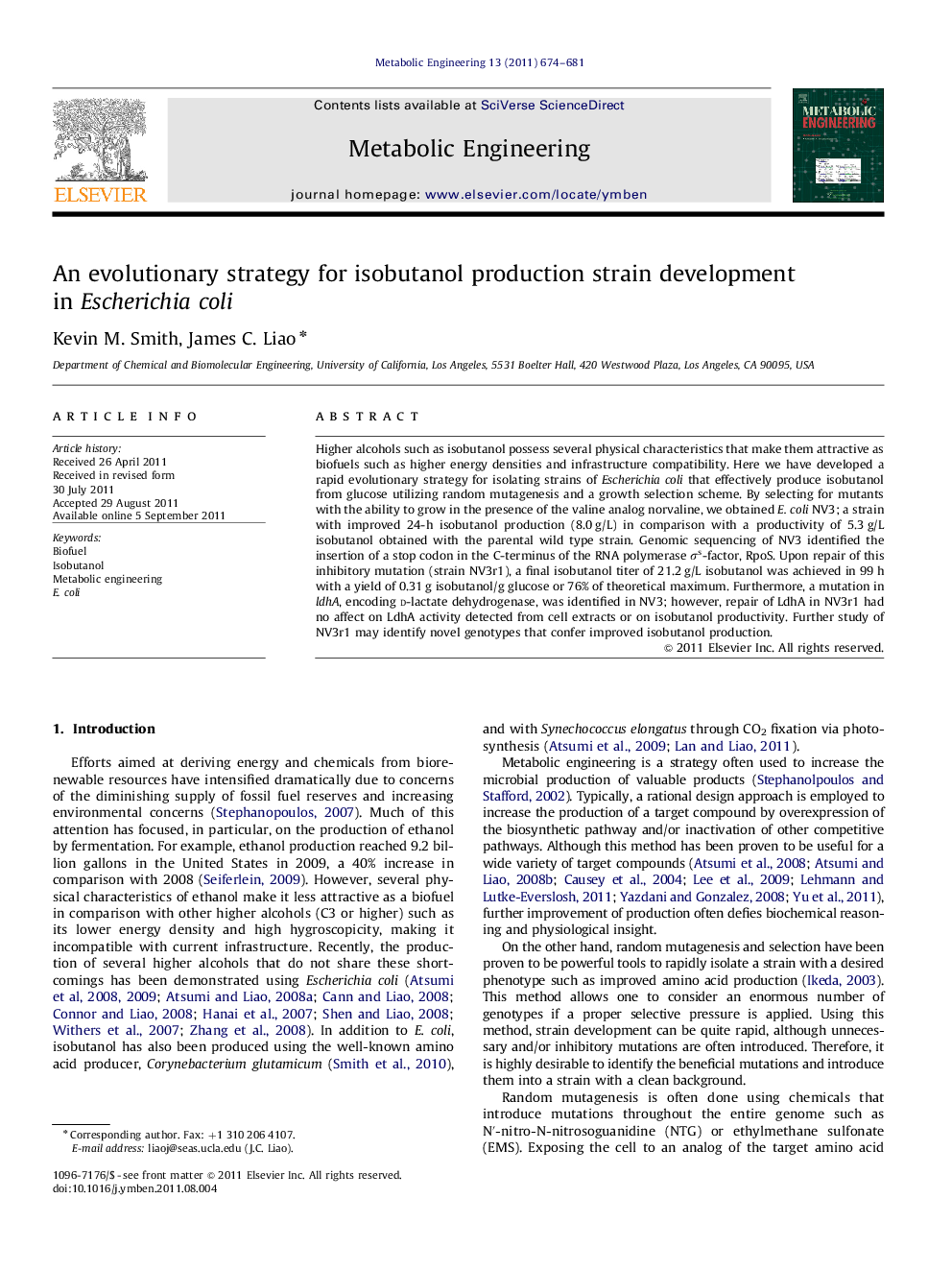| Article ID | Journal | Published Year | Pages | File Type |
|---|---|---|---|---|
| 31769 | Metabolic Engineering | 2011 | 8 Pages |
Higher alcohols such as isobutanol possess several physical characteristics that make them attractive as biofuels such as higher energy densities and infrastructure compatibility. Here we have developed a rapid evolutionary strategy for isolating strains of Escherichia coli that effectively produce isobutanol from glucose utilizing random mutagenesis and a growth selection scheme. By selecting for mutants with the ability to grow in the presence of the valine analog norvaline, we obtained E. coli NV3; a strain with improved 24-h isobutanol production (8.0 g/L) in comparison with a productivity of 5.3 g/L isobutanol obtained with the parental wild type strain. Genomic sequencing of NV3 identified the insertion of a stop codon in the C-terminus of the RNA polymerase σs-factor, RpoS. Upon repair of this inhibitory mutation (strain NV3r1), a final isobutanol titer of 21.2 g/L isobutanol was achieved in 99 h with a yield of 0.31 g isobutanol/g glucose or 76% of theoretical maximum. Furthermore, a mutation in ldhA, encoding d-lactate dehydrogenase, was identified in NV3; however, repair of LdhA in NV3r1 had no affect on LdhA activity detected from cell extracts or on isobutanol productivity. Further study of NV3r1 may identify novel genotypes that confer improved isobutanol production.
► Random mutagenesis and growth selection with norvaline improves isobutanol production in E. coli. ► Strain NV3r1 produces 21.2 g/L isobutanol at 76% of theoretical maximum yield. ► Stationary phase is critical for effective isobutanol production in E. coli. ► LdhA mutation in NV3r1 has no effect on isobutanol production. ► Further study of NV3r1 may identify novel genotypes for improved isobutanol production.
